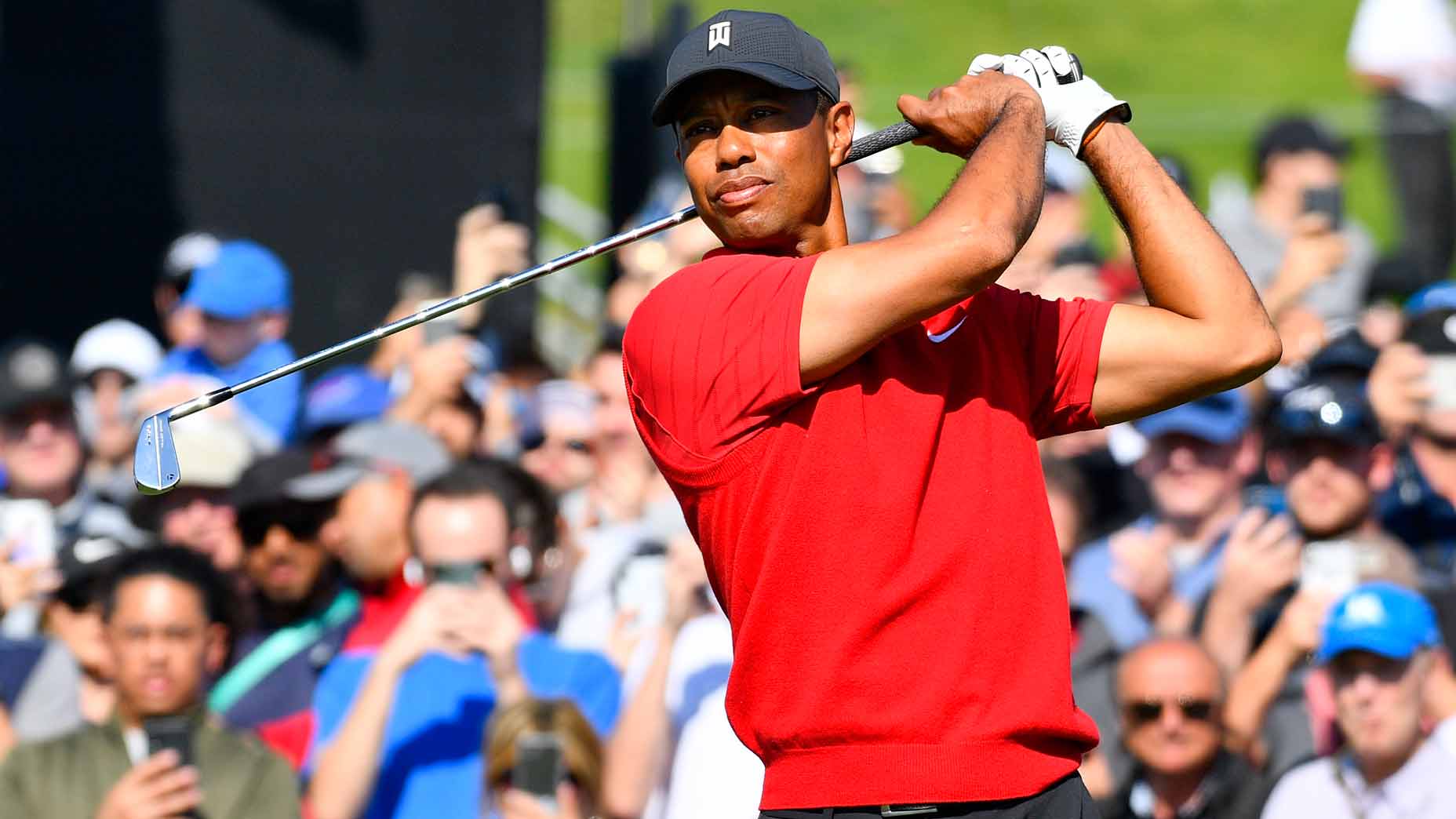A 6-10 handicap is a good golf handicap, as it indicates the player is shooting scores in the 80s on par 72 courses.
- The average golf handicap for male golfers is around 16, while for female golfers it is around 28.
- A handicap of 10 or lower is generally considered a "good" handicap, as it indicates the player is shooting scores in the 80s on par 72 courses.
- Golfers with a handicap under 10 are experienced players who have invested significant time and effort into improving their game.
- The top professional golfers on the PGA Tour have handicaps in the +6 to +8 range, which is considered exceptional.
What Is A Scratch Golfer?
A scratch golfer is a player with a 0 handicap, meaning they typically shoot close to even par. Players better than scratch have a "plus" handicap, such as +1, +2, etc. These are extremely skilled golfers, with the top PGA Tour players having handicaps in the +6 to +8 range.
In summary, a "good" golf handicap is generally considered to be 10 or lower, as this indicates the player is an experienced and skilled golfer. The average golfer, however, has a much higher handicap in the 16-28 range.
What Is a Good Golf Handicap for a Mid-Handicap Golfer?
A handicap in the 10-13 range is considered good golf for a mid-handicap. Golfers in this range are experienced players who have developed solid fundamentals and consistency.
Defining a Mid-Handicap Golfer
- A mid-handicap golfer has a handicap index between 10 and 20.
- Mid-handicap golfers typically shoot scores between 80 and 94 for 18 holes.
Categories of Mid-Handicappers
- Lower Mid-Handicap: 10-13 index
- Mid Mid-Handicap: 14-17 index
- Higher Mid-Handicap: 18-20 index
Characteristics of a Mid-Handicap Golfer
- Makes more bogeys than birdies and pars
- Typically hits about half as many greens in regulation as a PGA Tour pro
- Struggles with consistency, occasionally mishitting shots
- May have a few three-putts per round, especially from short range
What is Considered a "Good" Mid-Handicap?
- A handicap in the 10-13 range is generally considered a "good" mid-handicap.
- Golfers in this range are experienced players who have developed solid fundamentals and consistency.
- They are capable of shooting in the low 80s on a regular basis.\

In summary, a "good" golf handicap for a mid-handicap player is typically in the 10-13 range, indicating they are an experienced and skilled golfer capable of shooting consistently in the low to mid 80s. However, mid-handicap golfers as a whole span a wide range from 10 to 20.
What Is Considered a High Golf Handicap?
A golf handicap is considered high when it is above 18. The upper limit for a golf handicap is 54. Around 25% of male golfers and 81% of female golfers have a high handicap.
Lower-High Handicap (19-29)
- Golfers in this range typically shoot in the low 90s to low 100s.
- The main goal is to break 100 consistently.
Mid-High Handicap (30-40)
- Golfers in this range typically average scores between 100-110.
- The main goal is to consistently break 90 and bring the handicap down to the 20s.
Higher-High Handicap (41-54)
- Golfers in this range typically shoot 113 to the high 120s.
- The main goal is to avoid excessive triple bogeys and shoot under 120 consistently.
Improving from a High Handicap
The key to improving from a high handicap is consistent practice and focusing on areas like reducing three-putts. As a high handicapper, having the right equipment that provides forgiveness can also be very helpful.
In summary, a golf handicap above 18 is generally considered a high handicap. The higher the handicap, the more the golfer is struggling with consistency and scoring. But with practice and the right equipment, high handicappers can steadily improve their game.
What Is a Low Handicap in Golf?
A low handicap in golf is generally considered to be a score of 1-3. This range indicates that the golfer is extremely skilled and typically shoots scores in the low 70s.
Low Single-Digit Handicap
- Range: 1-3
- Score: Typically shoots between 73 and 75 on par 72 courses.
Mid Single-Digit Handicap
- Range: 4-6
- Score: Typically shoots between 76 and 79 on par 72 courses.
High Single-Digit Handicap
- Range: 7-9
- Score: Typically shoots in the high 70s to low 80s on par 72 courses.
Mid-Handicap
- Range: 10-18 or 10-20 (depending on the source)
- Score: Typically shoots between 80 and 94 on par 72 courses.
High Handicap
- Range: Above 18
- Score: Typically shoots above 94 on par 72 courses.
In summary, a low handicap in golf is a score of 1-3, indicating exceptional skill and low scores.
What Is Considered a Bad/Worst Golf Handicap?
In golf, a bad handicap is generally considered to be anything above 18, with the highest end being 54 and above. Anything under 18 is viewed as a good, low handicap.
Defining a Bad Handicap
- A golf handicap above 18 is generally considered a "bad" handicap.
- The upper limit for a golf handicap is 54.
- Around 25% of male golfers and 81% of female golfers have a high/bad handicap.
- The key is that handicaps are relative - a 20 handicap may be considered bad for an experienced player, but good for a beginner. The most important thing is to focus on improving your own game rather than comparing yourself to others.
Improving from a Bad Handicap
The key to improving from a high/bad handicap is consistent practice and focusing on areas like reducing three-putts. Having the right equipment that provides forgiveness can also be very helpful for high handicappers.
In summary, a golf handicap above 18 is generally considered a high or "bad" handicap. The higher the handicap, the more the golfer is struggling with consistency and scoring. But with practice and the right equipment, high handicappers can steadily improve their game.
What is a Good Handicap in Golf for a Man?
A handicap under 10 is usually considered a good handicap for a male golfer. This indicates the player has been playing golf for a while and has developed their skills.
Good Handicap Range for Men
- The most common handicap range for men is 13.0-13.9, which accounts for about 5.4% of male golfers in the U.S.
- Nearly a quarter (21.16%) of male golfers have handicaps ranging from 10.0-13.9, so this could also be considered a "good" handicap range.
- To be in the top 10% of male golfers, a handicap of 4.9 or better is required.
Average Male Handicap
- The average golf handicap for men in the U.S. is 14.2.
- In the UK, the average male handicap is 16.

So in summary, a good handicap for a male golfer would generally be considered to be in the single-digit range, ideally 10 or below. This indicates an experienced, skilled player. However, handicaps in the 10-14 range can also be considered "good" as they are better than average. The key is to aim to get your handicap into the single-digit range over time as you improve your game.
What is a Good Golf Handicap for Beginners?
A good handicap for a beginner golfer would generally be considered anything under 20.
Good Handicap Range for Beginners
- A good handicap for a beginner golfer would be under 20.
- However, it is not uncommon for beginner golfers to have handicaps in the range of 20-36 or higher when they are just starting out.
- The average handicap for a beginner can vary greatly depending on their progress, dedication, and how much time they invest in learning and playing the game.
Maximum Golf Handicap
- The maximum handicap index was recently changed to 54.0 for all players, regardless of gender. This was done to make golf more inclusive and accessible to players of all levels.
- Finding a golfer with the maximum 54 handicap is quite rare, with less than 1% of registered golfers in the US and UK holding this level.
So in summary, a "good" handicap for a beginner golfer would typically be considered anything under 20. But handicaps in the 20-36 range are also common for those just starting out in the sport. The key is to focus on improvement over time rather than comparing yourself to others. With practice and dedication, beginner golfers can steadily work on lowering their handicap.
How to Reduce Your Golf Handicap
Improve Your Short Game
- Focus on sharpening your short game skills within 100 yards of the hole. This includes chipping, pitching, and putting.
- Spend time practicing your short game shots on the practice green and around the course. The short game accounts for the majority of strokes in golf.
- Consider taking lessons from a golf pro to improve your technique and consistency with your short game.
Optimize Your Equipment
- Get properly fitted for golf clubs that match your swing and body type. This can provide 20+ yards of extra distance.
- Ensure your clubs are in good condition - clean grooves, new grips, etc. Poorly maintained equipment can negatively impact your game.
Develop Consistent Driving
- Practice your driving technique on the range to improve accuracy and distance off the tee.
- Consider playing more conservatively off the tee, using a 3-wood or hybrid if your driver is unreliable. Accuracy is more important than maximum distance.
- Develop a "go-to" reliable tee shot when your driver is not cooperating.
Embrace Course Management
- Avoid "hero shots" and focus on making smart, conservative decisions on the course.
- Understand the risks and consequences of different shot options, and choose the safest play.
- Manage your misses - aim to minimize damage when you hit a poor shot.
Practice Regularly
- Commit to hitting the driving range frequently to groove your swing mechanics.
- Vary your practice - work on all aspects of your game, not just your strengths.
- Play different courses to expose weaknesses in your game and force you to improve.

The key is to take a strategic, well-rounded approach to improving your game. Focus on the fundamentals, optimize your equipment, and make smart decisions on the course. With consistent practice and the right guidance, you can steadily lower your golf handicap over time.
Determining Your Golf Handicap if You Shoot 100
Handicap Range for 100 Scores
- According to the analysis, a score of 100 would typically correspond to a golf handicap in the range of 22-25.
- This is considered an "average" or "high-average" handicap for a male golfer.
- The search results indicate that a 100 score is a bit better than the true average American male golfer, who is estimated to shoot around 94-106 on average.
Handicap Calculation
- To calculate your specific handicap with a 100 score, you would use the following formula:Handicap Differential = (Adjusted Gross Score - Course Rating) x 113 / Slope Rating.
- Your official handicap would then be the average of your 8 best handicap differentials out of your last 20 rounds.
So in summary, if you are consistently shooting a 100 golf score, your handicap would likely fall in the 22-25 range. This puts you in the "average" to "high-average" skill level for a male golfer. With continued practice and improvement, you can work on lowering that handicap over time.
Golf Handicaps for 9-Hole and 18-Hole Rounds
Why are golf handicaps different for 9-hole and 18-hole rounds?
- Concentration Level: Maintaining focus and concentration is more challenging over 18 holes (around 4.5 hours) compared to 9 holes. This makes it harder to sustain good performance over the full 18 holes.
- Score Variability: Scores tend to vary more between the front 9 and back 9 of an 18-hole round, compared to the consistency of a 9-hole round. This leads to greater differences between a player's 9-hole and 18-hole handicaps.
- Handicap Calculation: The USGA handicap formula is based on the best 10 out of the last 20 scores. For 9-hole rounds, the handicap (called "Handicap Index N") only ranges from 0-18, while the 18-hole handicap ranges from 0-36. This results in the 18-hole handicap being higher than twice the 9-hole handicap.
How do the handicap calculations differ between 9-hole and 18-hole rounds?
- 9-Hole Handicap (Handicap Index N): Calculated using the course rating of the 9 holes played and the same formula as the 18-hole handicap. This handicap ranges from 0-18.
- 18-Hole Handicap: Calculated using the full 18-hole course rating. This handicap ranges from 0-36 and is typically higher than twice the 9-hole handicap.
The key difference is that 9-hole rounds are not used in the calculation of the regular 18-hole Handicap Index. The 9-hole Handicap Index N is a separate measure.
How do I convert between a 9-hole and 18-hole handicap?
There is no direct conversion formula, as the two handicaps are calculated differently. However, some general guidelines are:
- 9-Hole Handicap (N) x 2 ≠ 18-Hole Handicap
- 18-Hole Handicap ≈ 9-Hole Handicap (N) + 4-8 strokes
The 18-hole handicap will typically be significantly higher than twice the 9-hole handicap, due to the differences in calculation and the greater variability in 18-hole scores.
When should I use a 9-hole vs 18-hole handicap?
- Use the 18-hole handicap when competing in events or matches that require an 18-hole handicap.
- Use the 9-hole Handicap Index (N) when only playing 9 holes, as it provides a more accurate reflection of your ability over that shorter distance.
The USGA recommends using the 18-hole handicap method whenever possible, as it is the standard system used by the majority of golfers. Only use the 9-hole handicap when an 18-hole handicap is not practical.
Is Diablo Golf an Official USGA Handicap?
The Diablo Golf Handicap Tracker app provided a way for golfers to calculate a handicap index, but it was not an official USGA Handicap Index.
- Diablo Golf had an agreement with the USGA to provide handicap calculations, but it was not the same as an official USGA Handicap Index.
- The app provided a "Scoring Average" handicap for golfers not in a USGA licensed club, but this was not a substitute for an official USGA Handicap Index.
- As of June 2023, the Diablo Golf app appears to have been discontinued, leaving users without a way to track their handicaps through the app.
- To obtain an official USGA Handicap Index, a player must be a member of an authorized golf club that is affiliated with a regional Allied Golf Association (AGA).
So in summary, while Diablo Golf provided a handicap tracking service, it was not considered an official USGA Handicap Index. Golfers who used the app will need to find an alternative way to establish an official handicap through a USGA authorized golf club.
FAQs
What is the golf handicap of an average golfer?
The average male golfer has a handicap of 16, while the average female golfer has a handicap of 28.
What's my golf handicap if I shoot 100?
If you typically shoot 100 on a par 72 course, your golf handicap would be approximately 28.
What percentage of golfers can break 100?
If considering only golfers who maintain a handicap, slightly over 50% can break 100. However, if looking at all recreational golfers, less than 25% regularly break 100.








.jpg)
.jpg)






